WJEC AS Physics Unit 1.2 - Kinematics
1/24
Earn XP
Description and Tags
Name | Mastery | Learn | Test | Matching | Spaced |
|---|
No study sessions yet.
25 Terms
Speed
Rate of change of distance. S=D/T. Unit=ms^-1
Average speed
Rate of change of distance calculated over a complete journey.
Mean speed=total distance travelled/total time
Unit;ms^-1
Instantaneous speed
Speed at a particular instant in time. Rate of change of distance.
Velocity
Rate of change of displacement. Unit; ms^-1
Mean velocity
Total displacement/total time taken. Unit; ms^-1
Instantaneous velocity
Rate of change of displacement at a particular instant in time.
Acceleration
Rate of change of velocity. Unit; ms^-2
Mean acceleration
Change in velocity/time taken. Unit: ms^-2
Instantaneous acceleration
The rate of change of velocity at a particular instant in time. Unit; ms^-2
Displacement
The shortest distance from A to B, together with the direction. Unit; m
Terminal velocity
The constant, maximum velocity of an object when the resistive forces on it are equal and opposite to the ‘accelerating’ force (e.g. pull of gravity)
Displacement-time graphs
X-axis; time, t, in seconds
Y-axis; displacement, x, in metres
Steeper line = higher constant velocity
Upwards; travelling at a constant positive speed/velocity
Flat; stationary
Downwards; negative velocity, going backwards
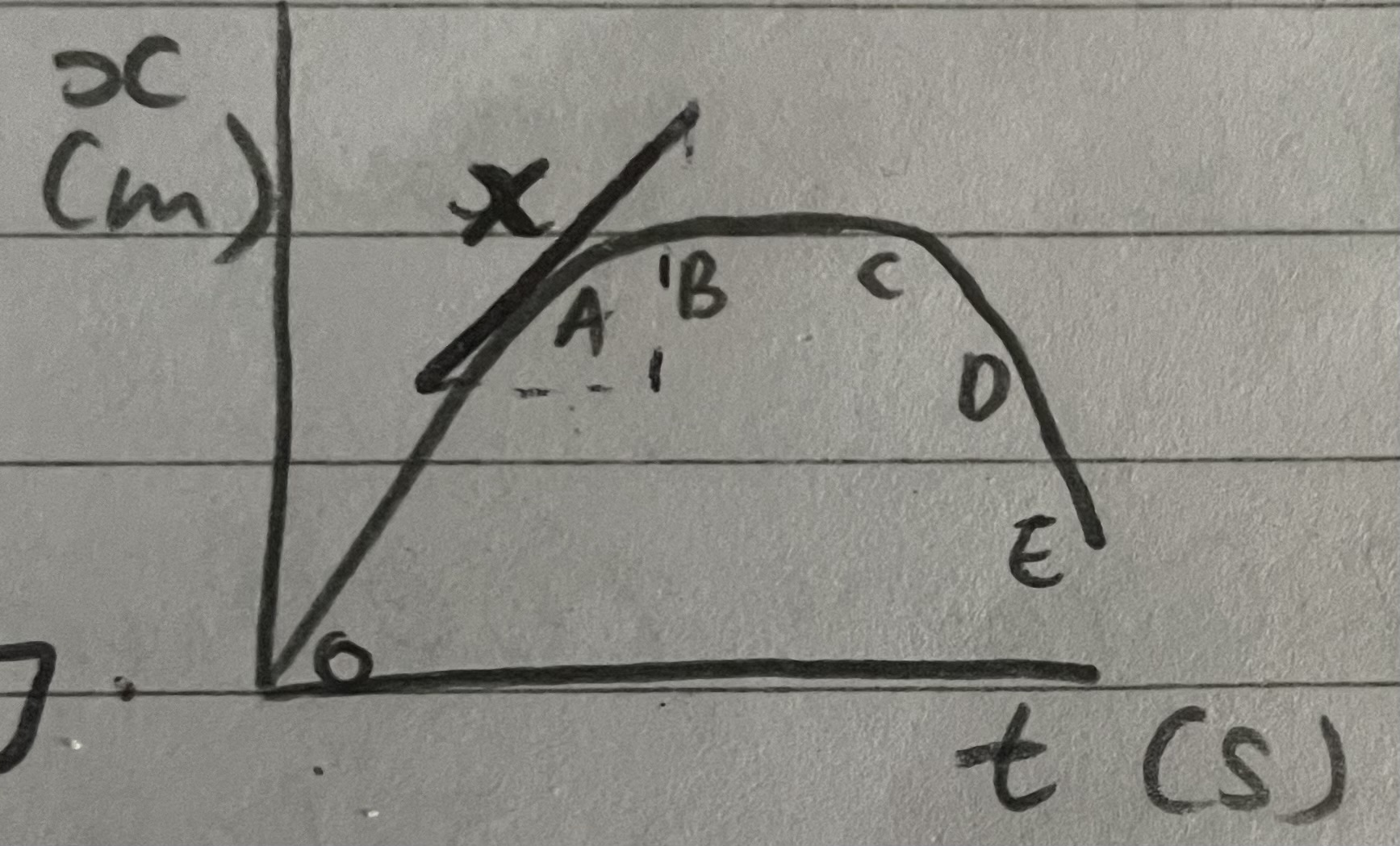
(Instantaneous) velocity from a displacement-time graph
Gradient of the tangent to the graph at the point
Average velocity from a displacement-time graph
Divide the change in displacement between the points by the time between them. (x/t)
Steep line on a displacement-time graph meaning
Higher constant velocity
Velocity-time graphs
Gradient = acceleration
Area under the graph = displacement travelled
Negative velocity = travelling in the opposite direction to the original motion
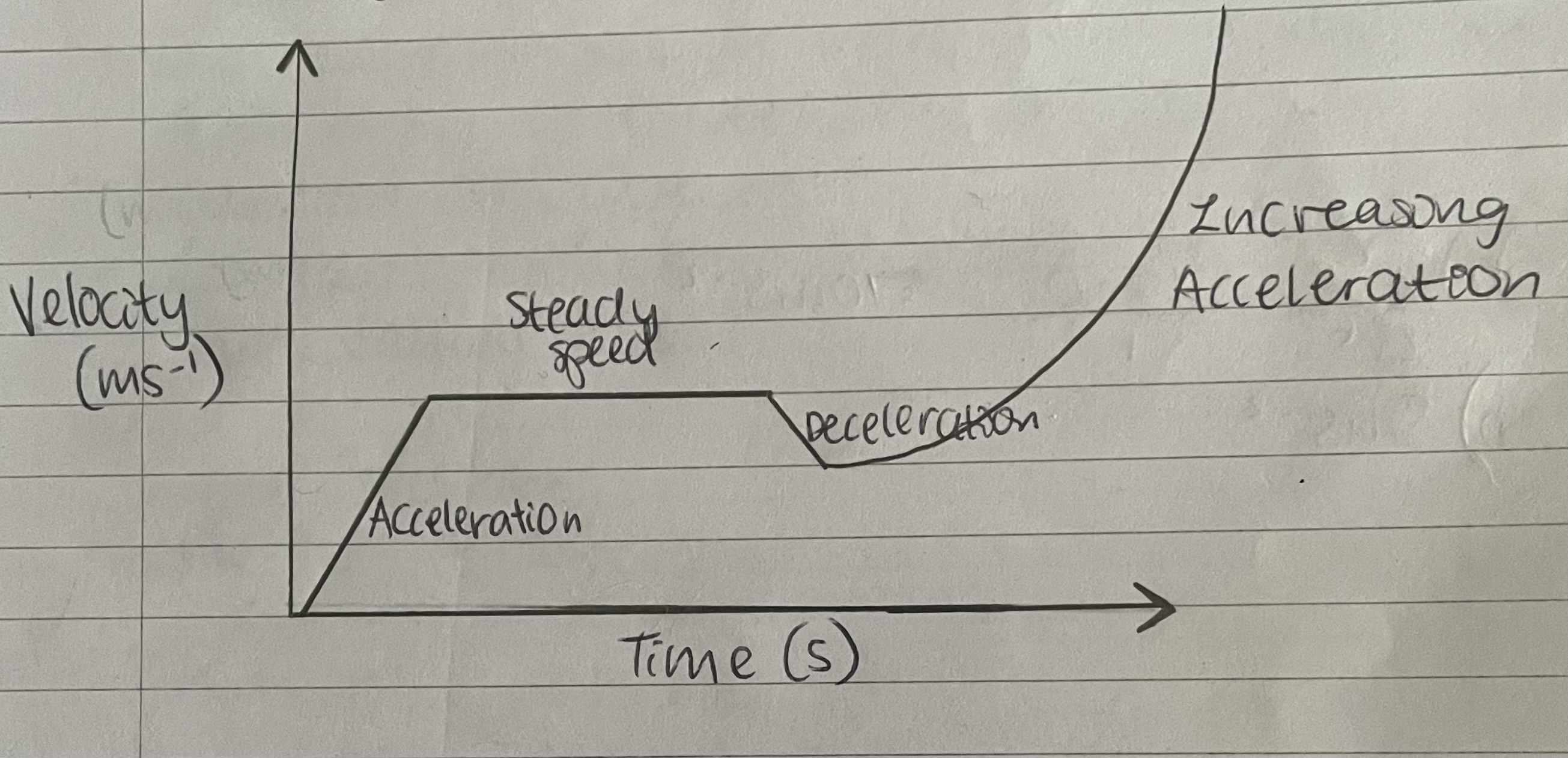
Distance travelled from a velocity-time graph with uniform motion
Area under the graph
Distance travelled from a velocity-time graph with non-uniform motion
Count the squares to estimate the distance travelled
Equations of uniform acceleration
v=u+at
x=1/2(v+u)t
x=ut+1/2at²
v²=u²+2ax
a; acceleration (ms^-2)
u; initial velocity (ms^-1)
v; final velocity (ms^-1)
t; time (s)
x; displacement (m)
Deriving v=u+at

Deriving x=1/2(v+u)t
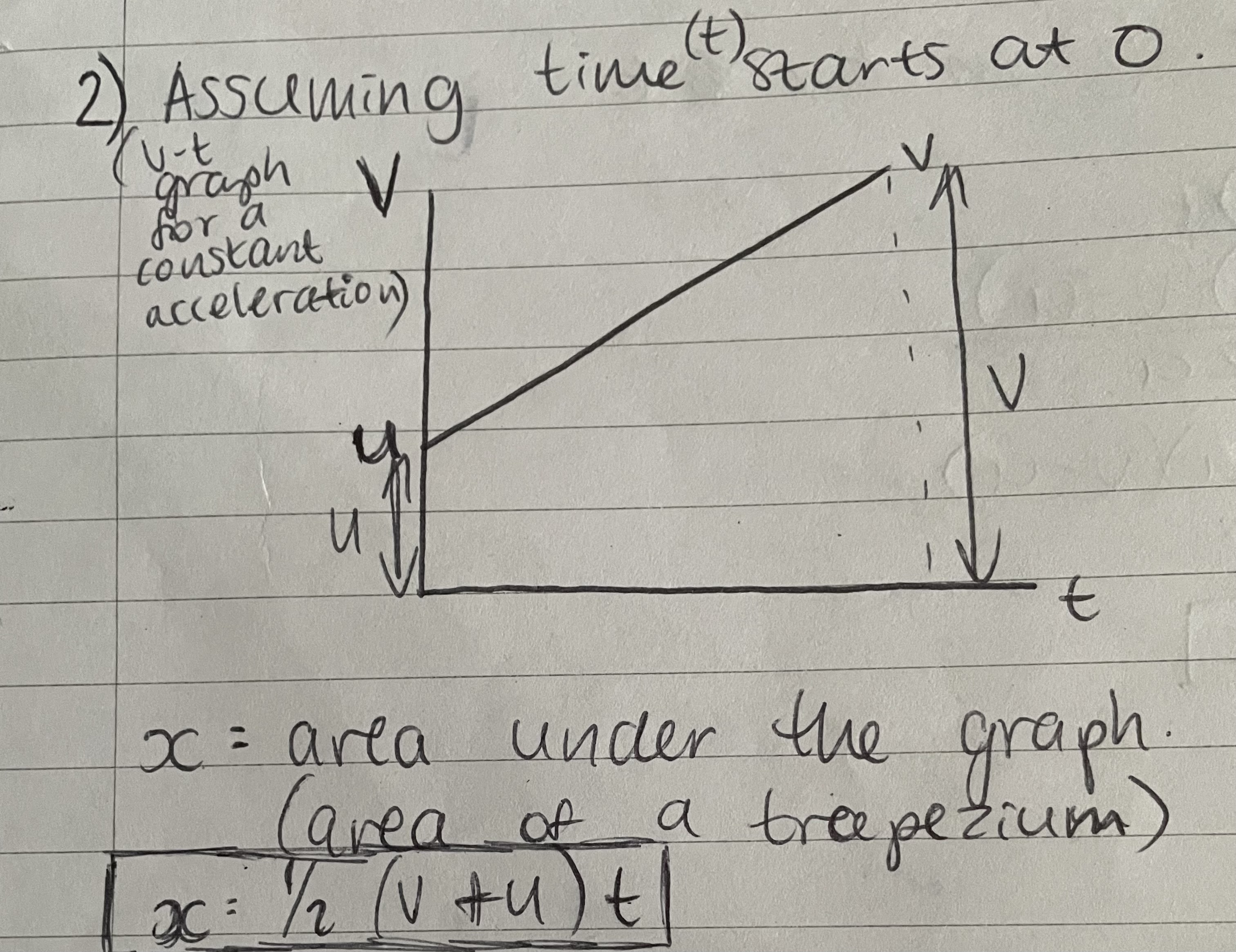
Deriving x=ut+1/2at²
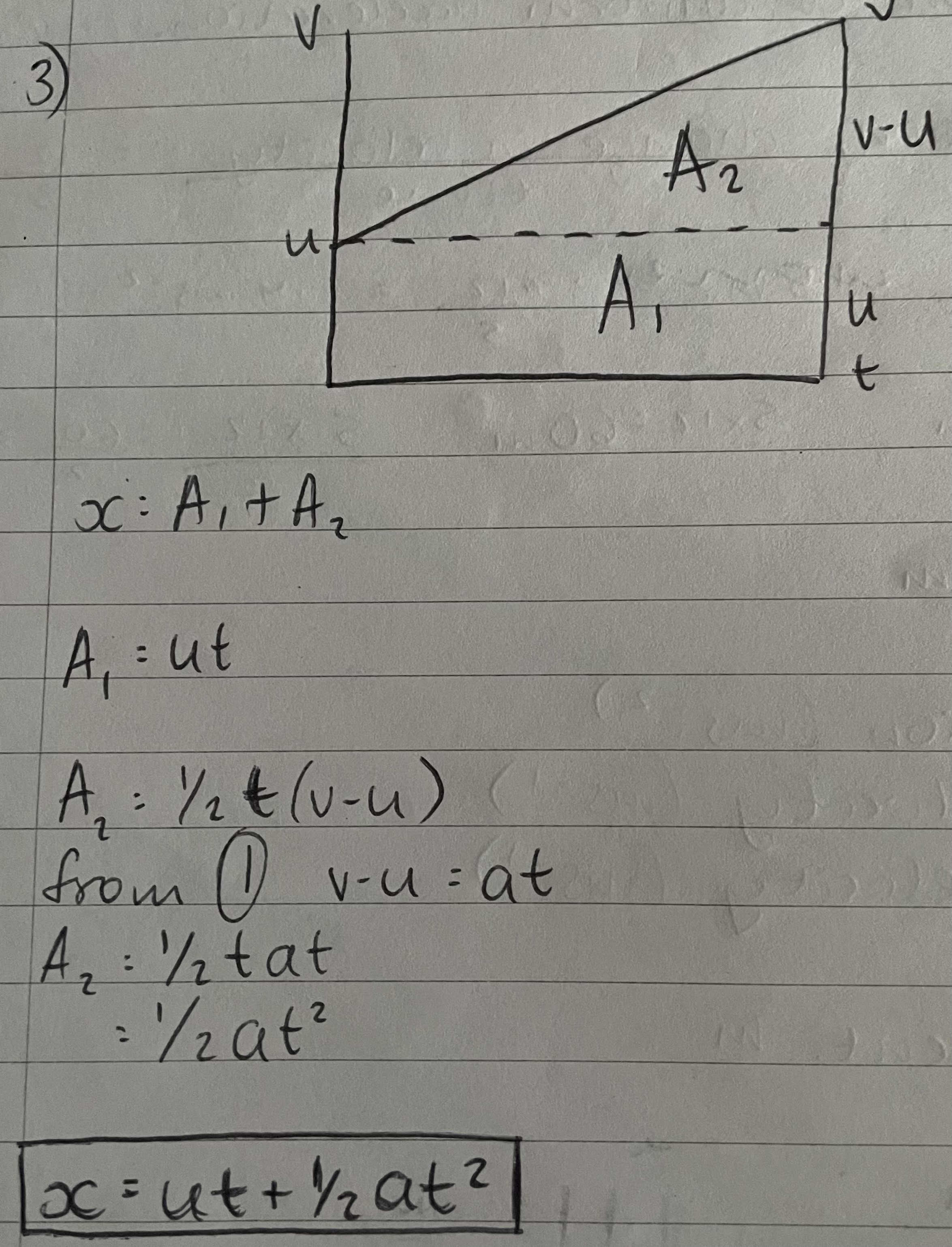
Deriving v²=u²+2ax
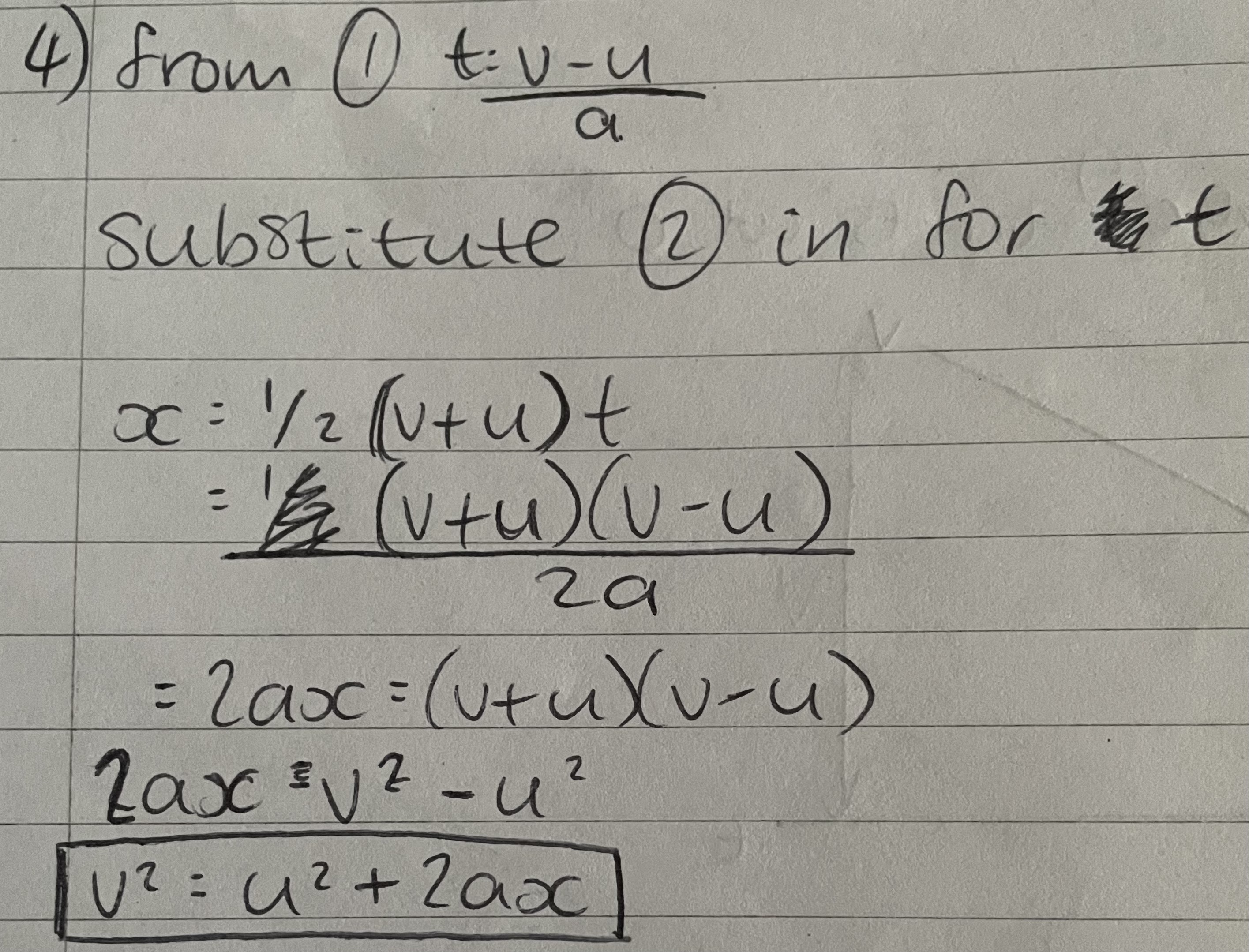
Terminal velocity
The constant, maximum velocity of an object when the resistive forces on it are equal and opposite to the ‘accelerating’ force (e.g. pull of gravity)
Projectiles
use xuvat equations
Vertical and horizontal motion of a body moving freely under gravity are independent (applies to projectile motion for objects being launched either horizontally or at an angle to the ground)
At an angle to the ground;
Vertical velocity will change due to the acceleration of free fall
The vertical component will depend on the initial velocity where v_vertical=v sinθ
The horizontal component will also depend on the initial velocity, where v_horizontal = v cosθ
Constant horizontal component, horizontal acceleration = g cos 90 =0
Vertical velocity will change fur to accelerator of free fall
Assume air resistance is 0